SCORES
We have about 25 pieces represented in one or another level of specificity by drawings, designs, notations, structural patterns and scores. When we say "score" we are referring to something in a graphic medium, mostly on paper, that lets us move from mental images to stage action that can be performed. Usually it's an idea that a performer or performers could not, or would not do without the graphic interpolation. In some cases they look sloppy and incomplete, haphazard and raggedy – because they are working documents shuffled around in rehearsals, not meant for display. They contain notations designed differently for different ideas. For others to appreciate them or even see what they are we often are invited to narrate, demonstrate and illustrate. A room with a large chalkboard and lots of table tops or clean floor will have us all hovering over spread-out sheets and rolls of paper, and drawing rather precisely with chalk.
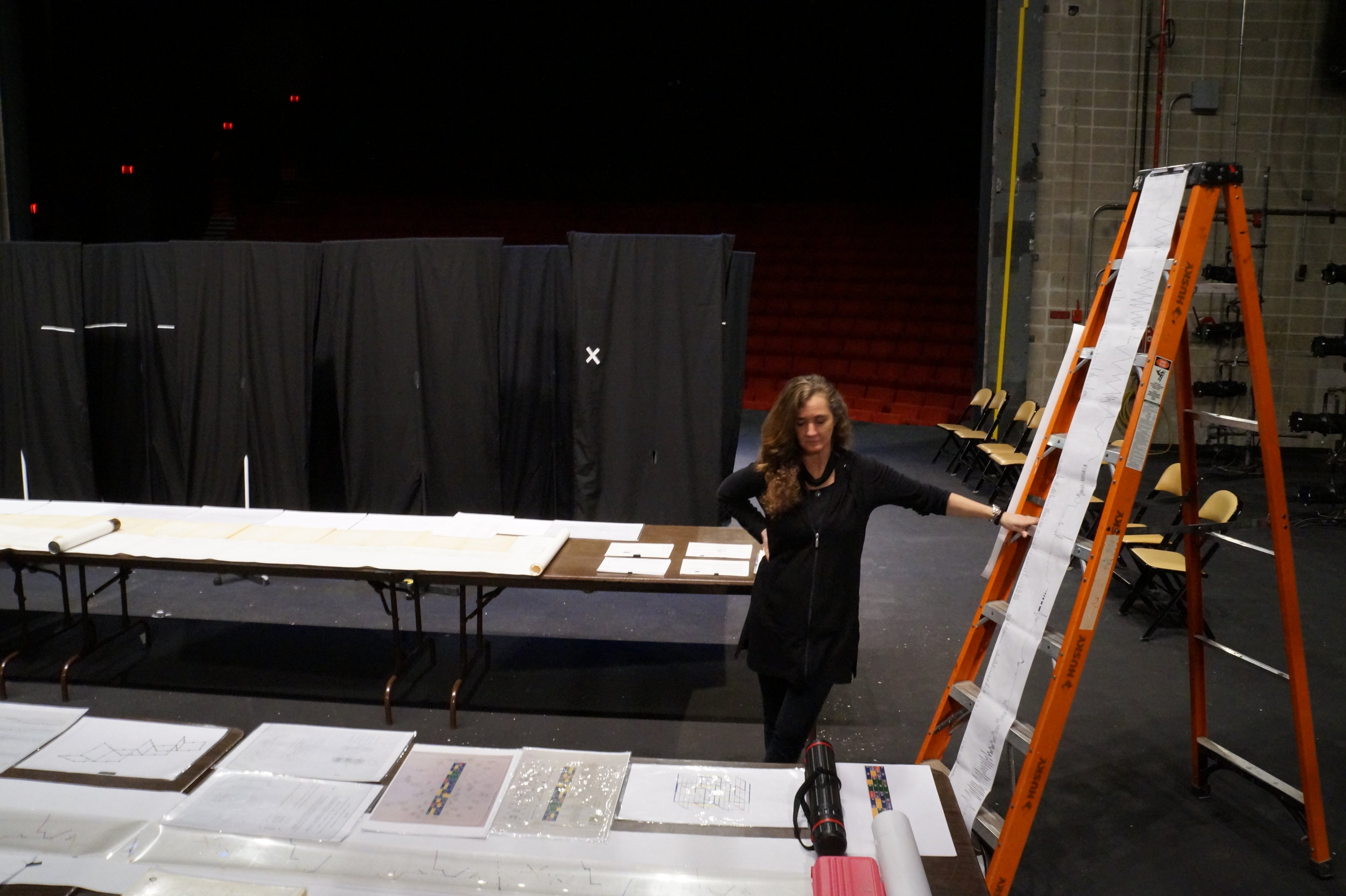
Lisa Fay displaying scores
(above) on stage at Krannert Center
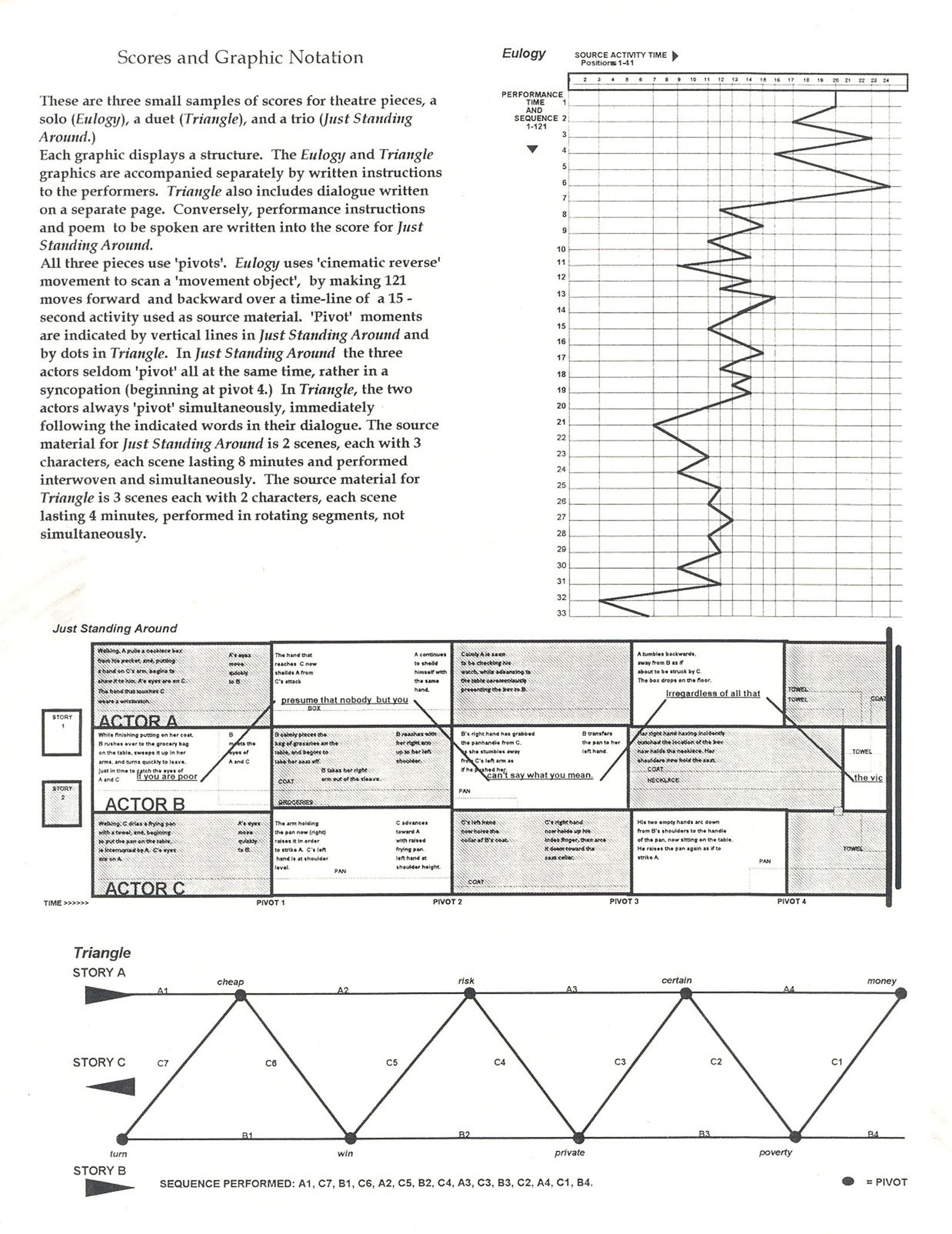
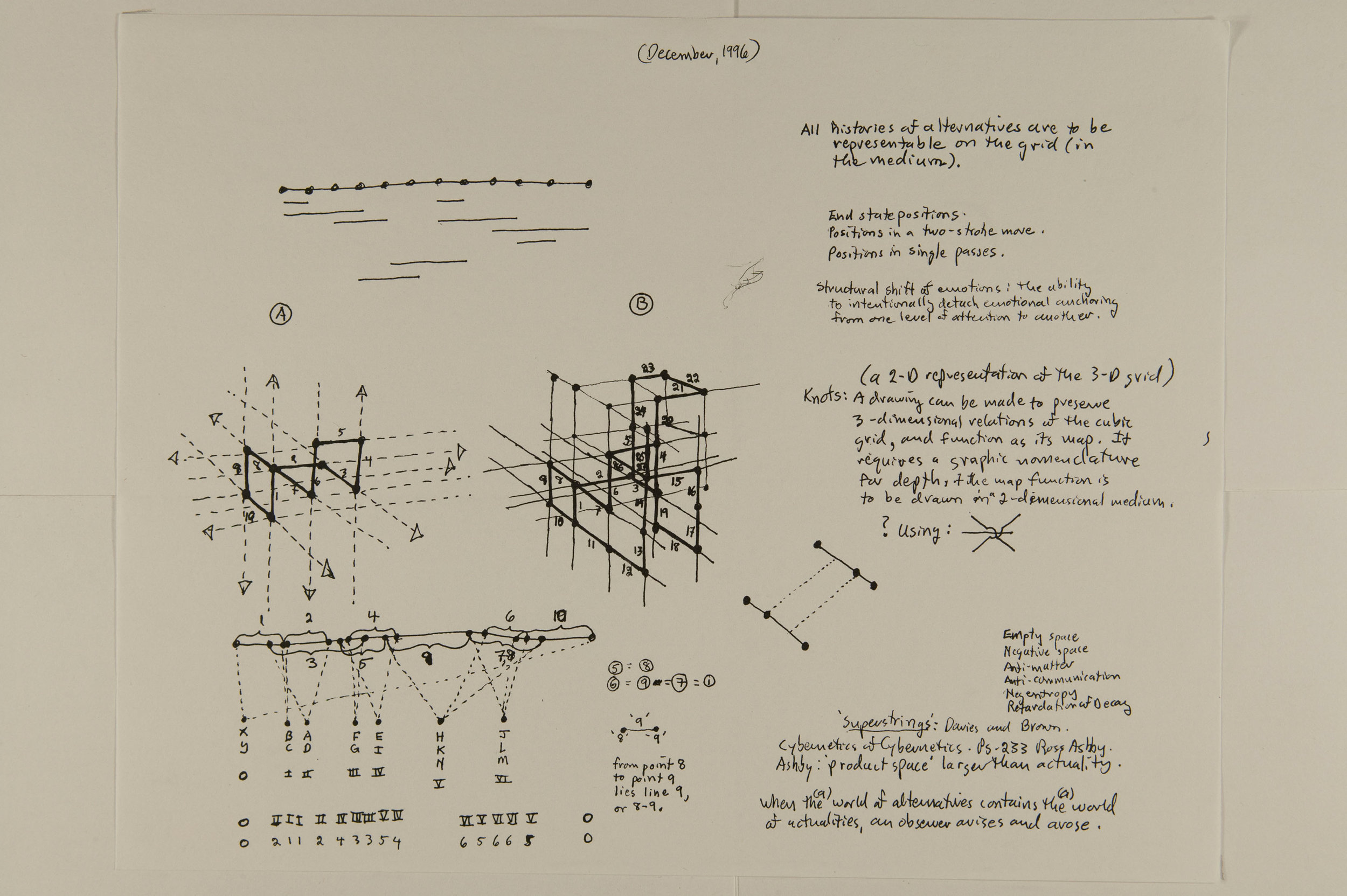
time and time again
(above) early sketches with core 3D grid for organization of action sequencing, etc. Fay and Glassman
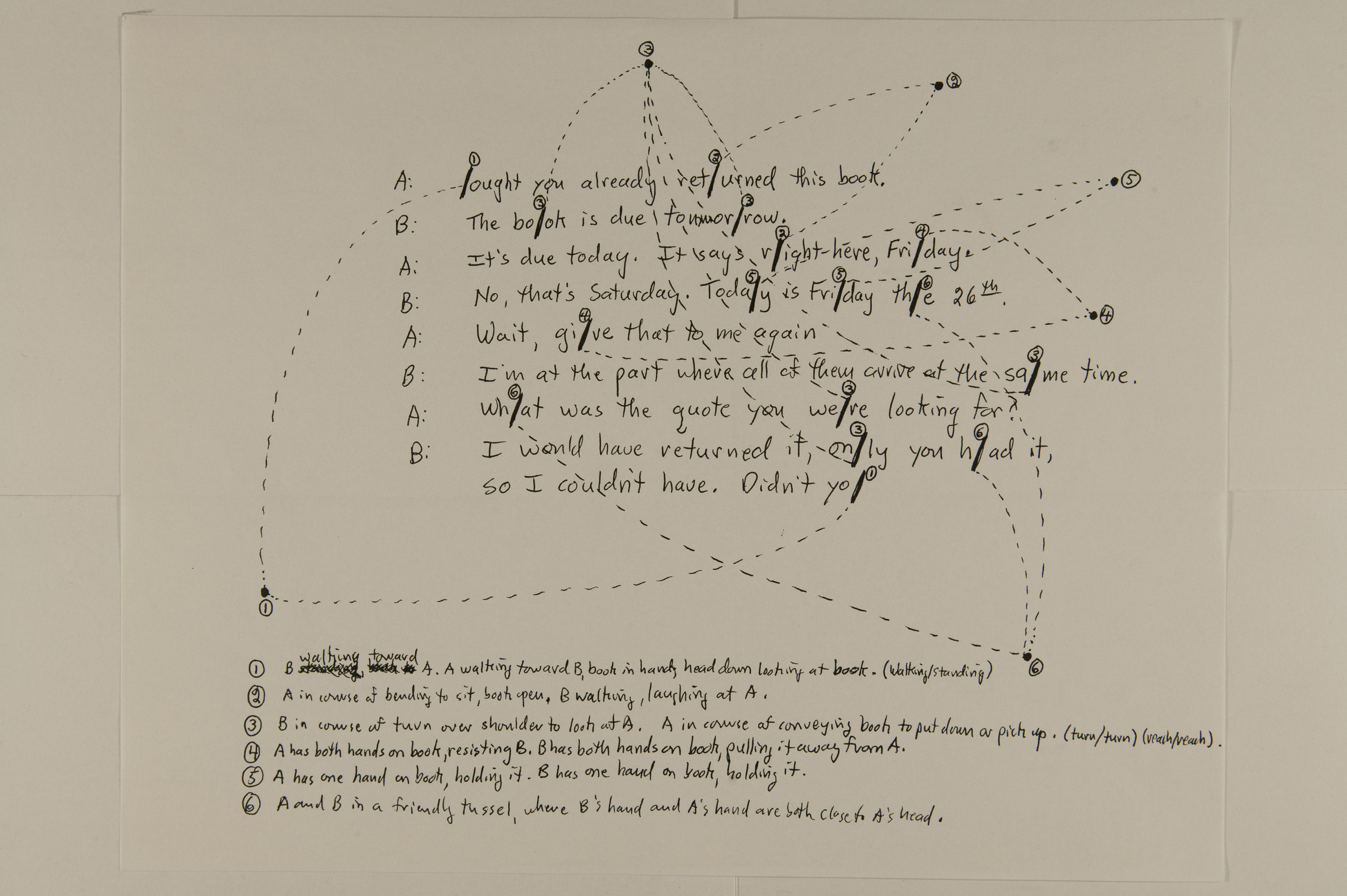
time and time again
(above) score for generating the pivot-montage overlay of speech, creating segments with overlaps with designated numbered pivot points, Fay and Glassman
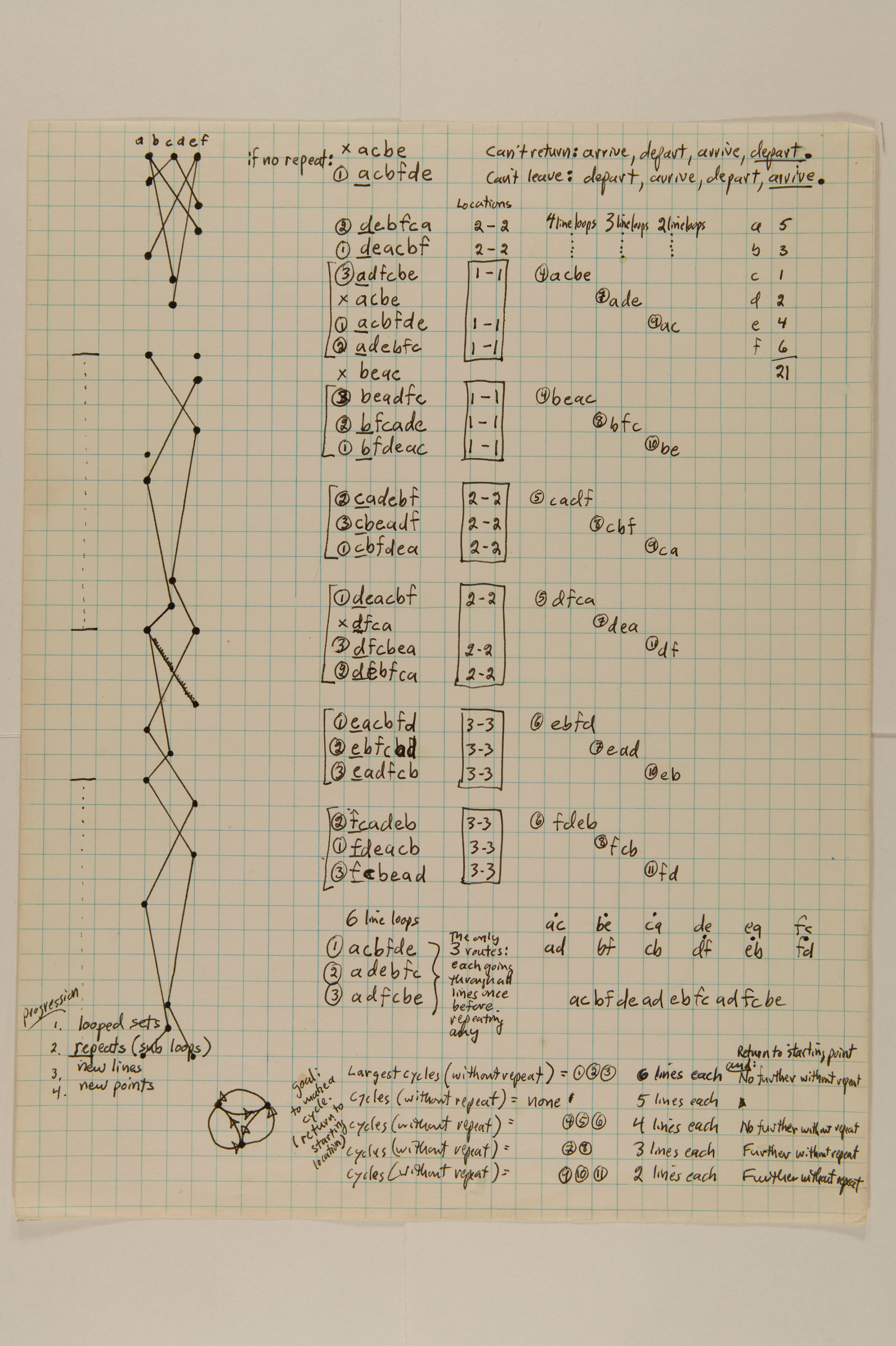
time and time again
(above) notes working out all the variations possible with given parameters and variables for the part of TATA with coming and going in alternation, Fay and Glassman
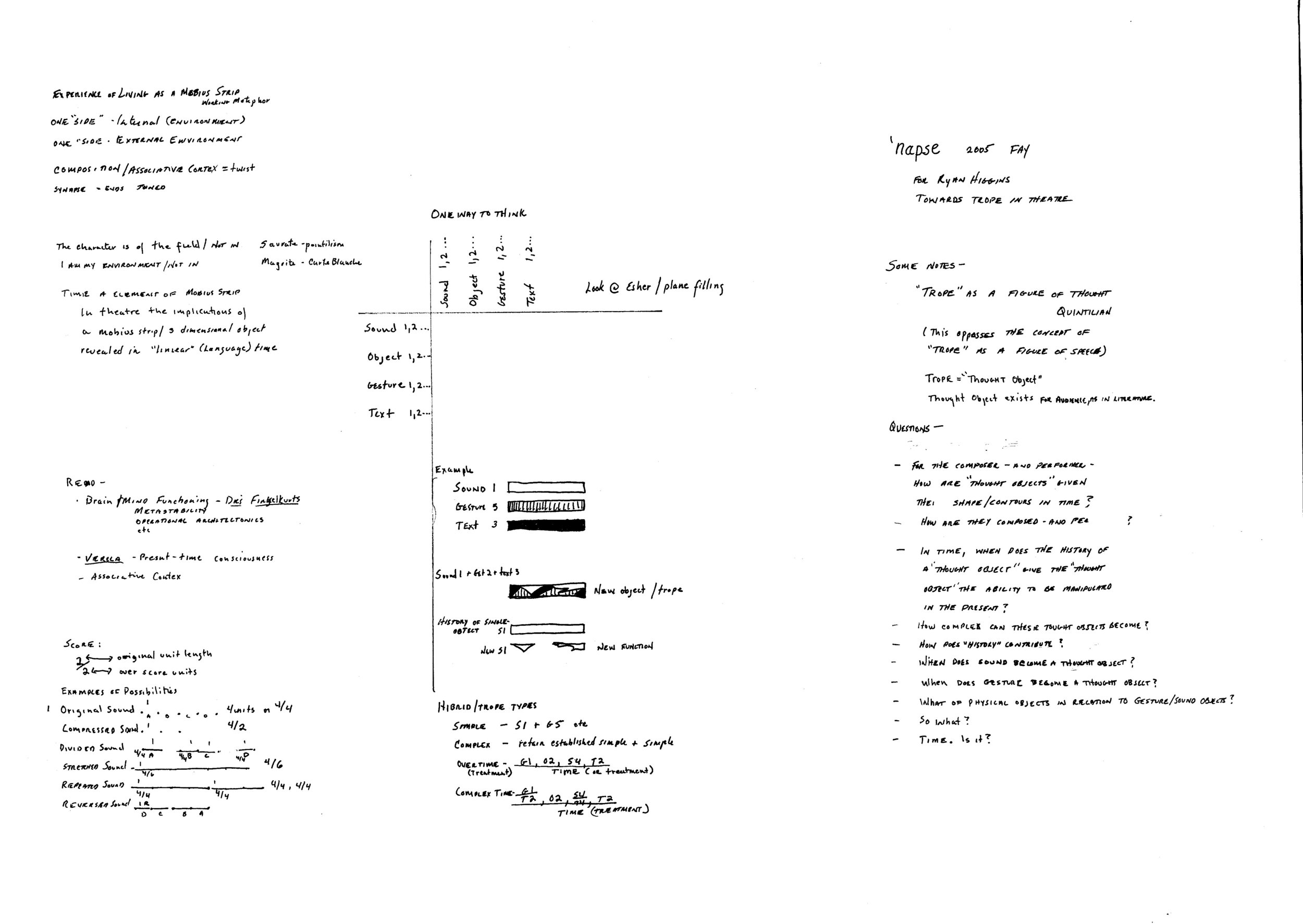
'napse
(above) instructions for score, by Lisa Fay, performed by Jeff Glassman
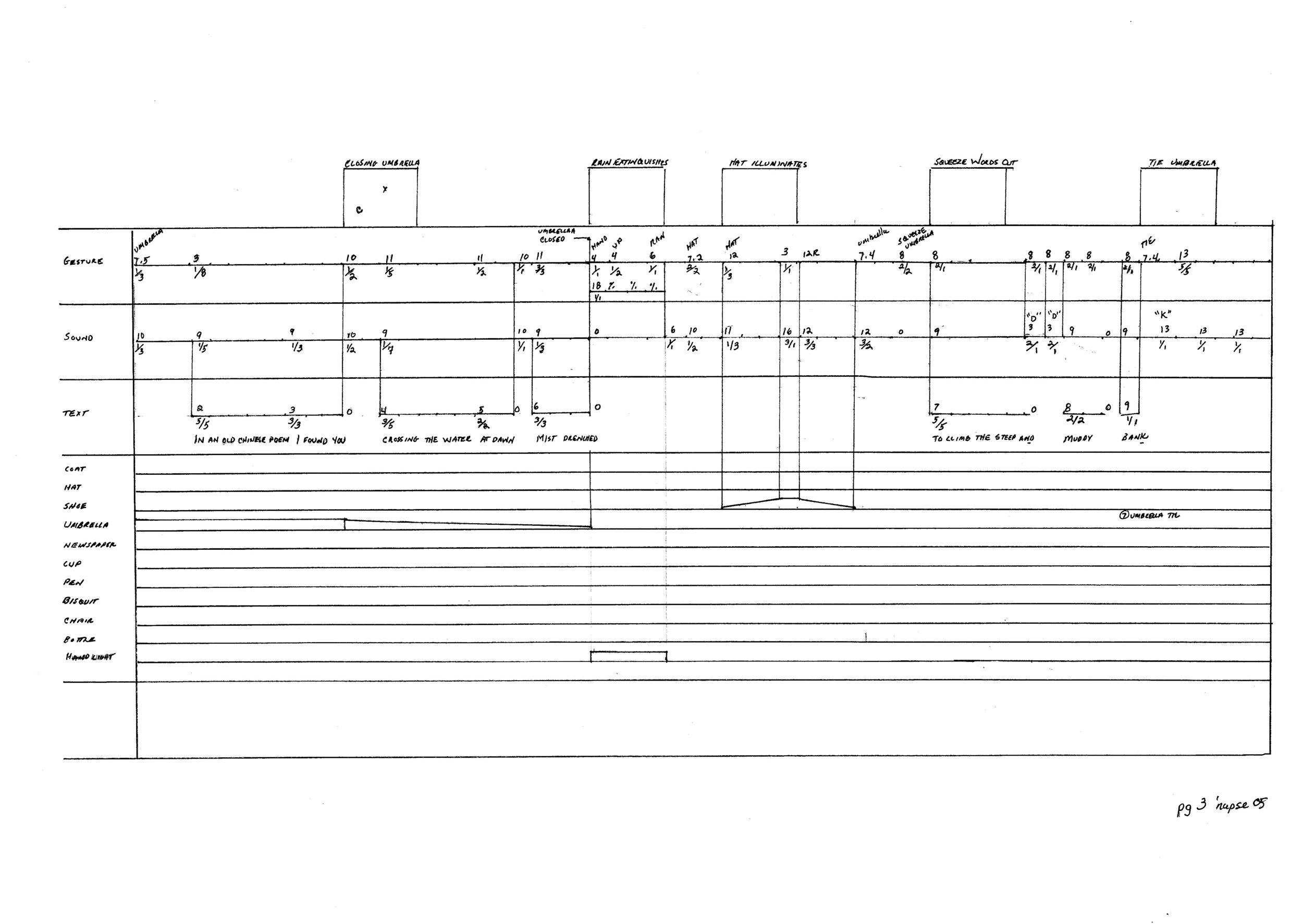
'napse
(above) by Lisa Fay, performed by Jeff Glassman, page 3 of 10

'napse
(above) by Lisa Fay, performed by Jeff Glassman, page 4 of 10
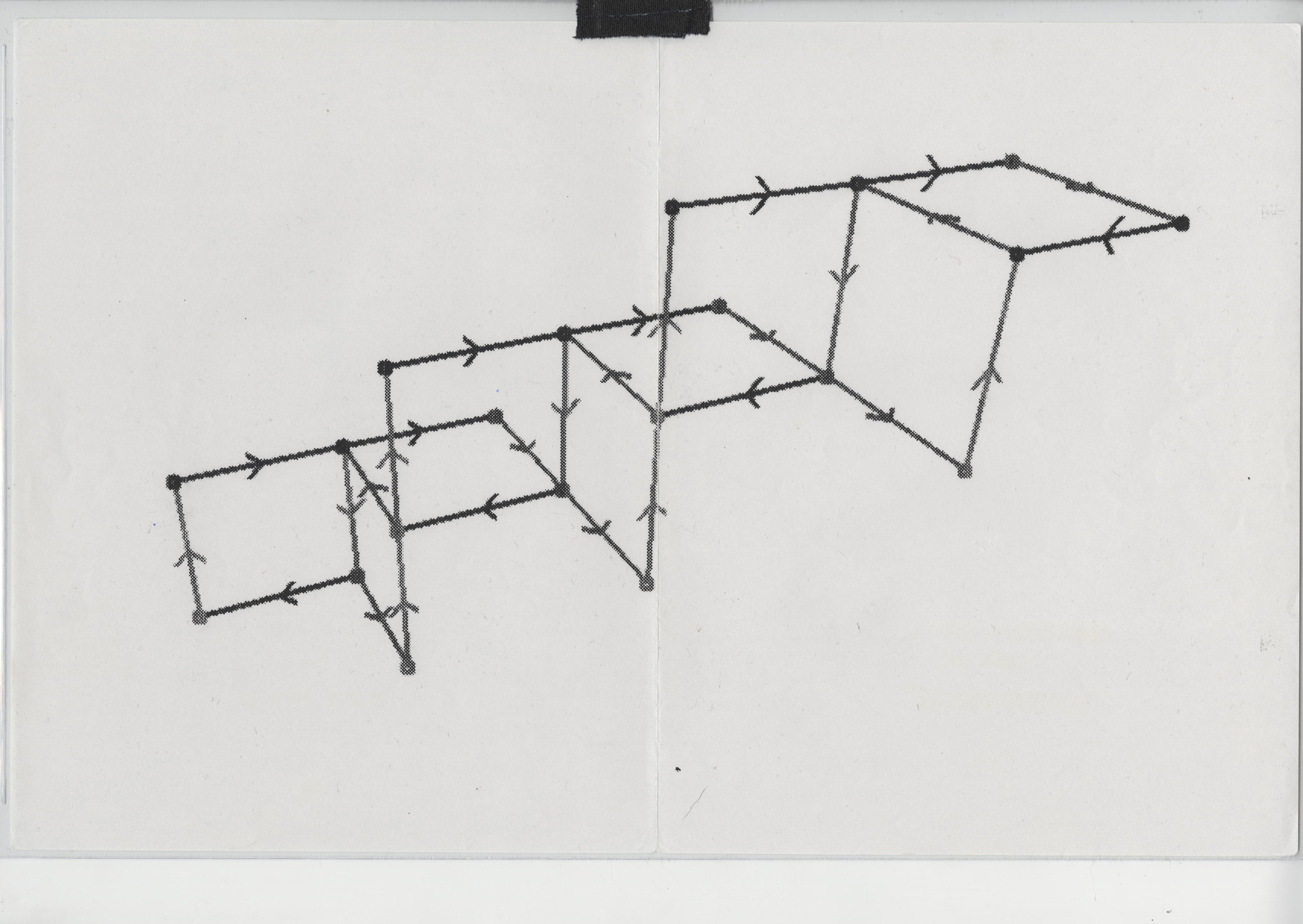
second opinion
(above) performers’ one-way time path through through 21 story segments; each corner turning is a pivot from one segment to another
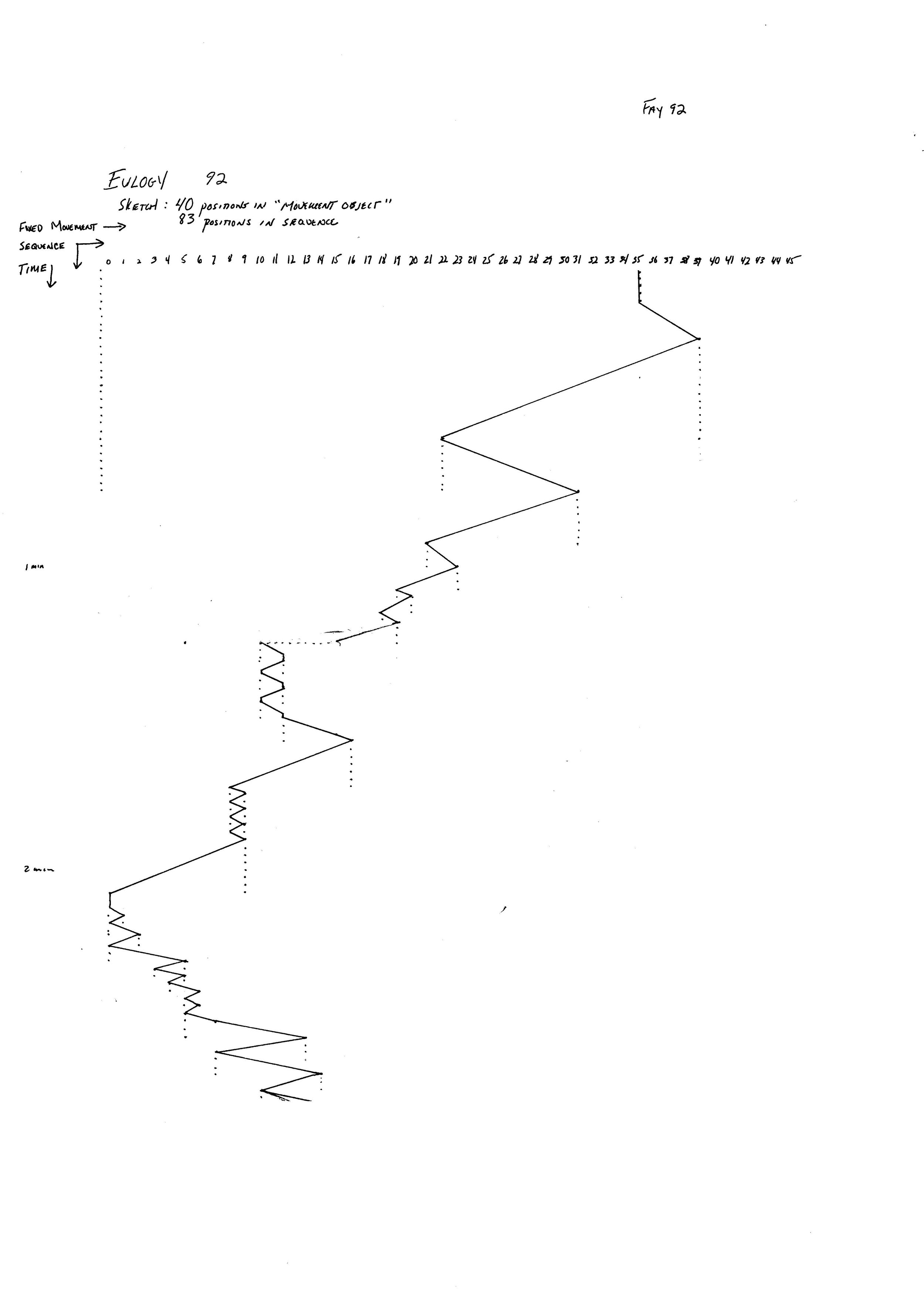
eulogy
(above) Page 1 of 2. Written by Lisa Fay, performed by Jeff Glassman
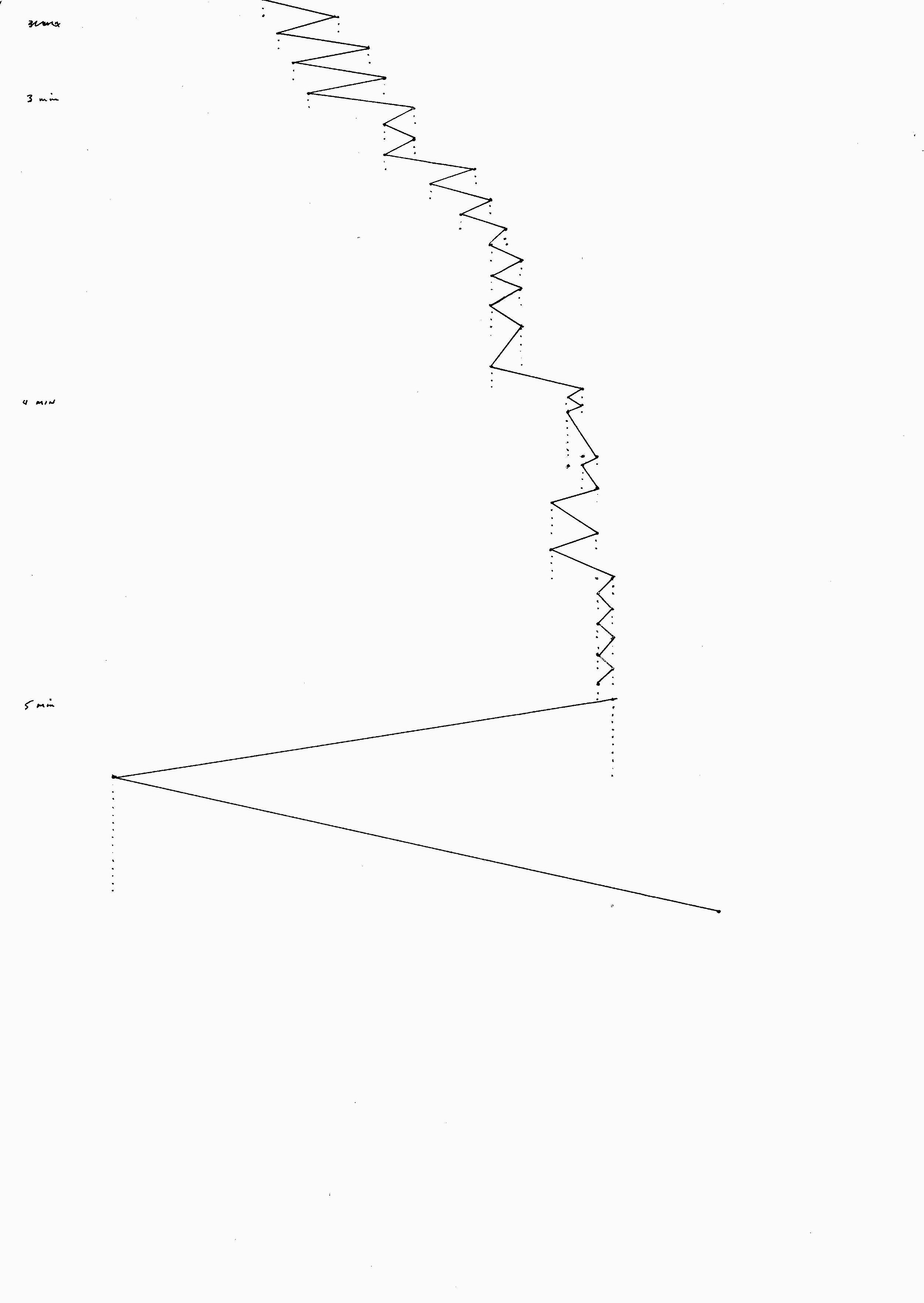
Eulogy
(above) Page 2 of 2. Written by Lisa Fay, performed by Jeff Glassman

bunraku
(above) score model for three actors, by Jeff Glassman
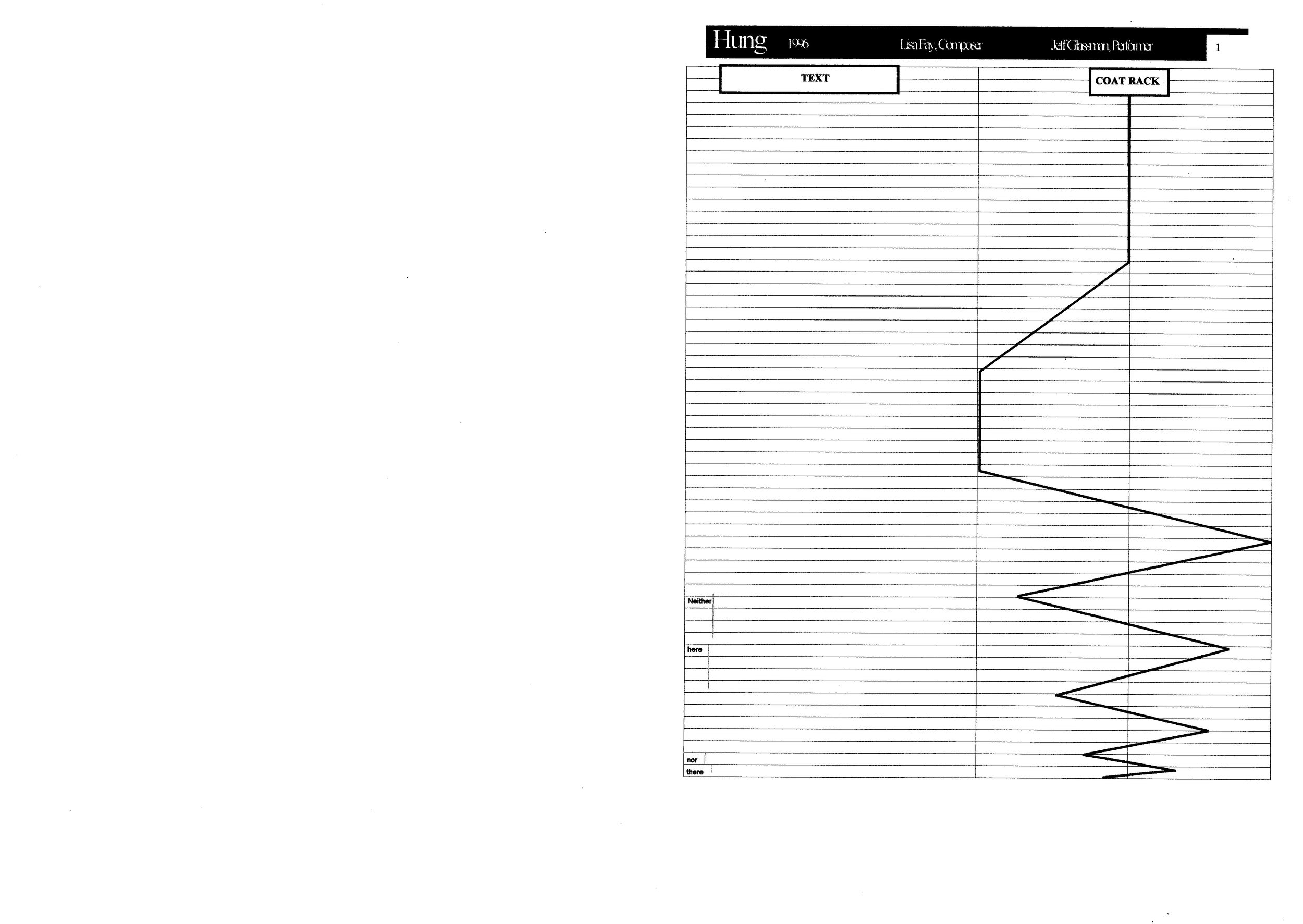
hung
(above) page 1 of 12, by Lisa Fay, performed by Jeff Glassman
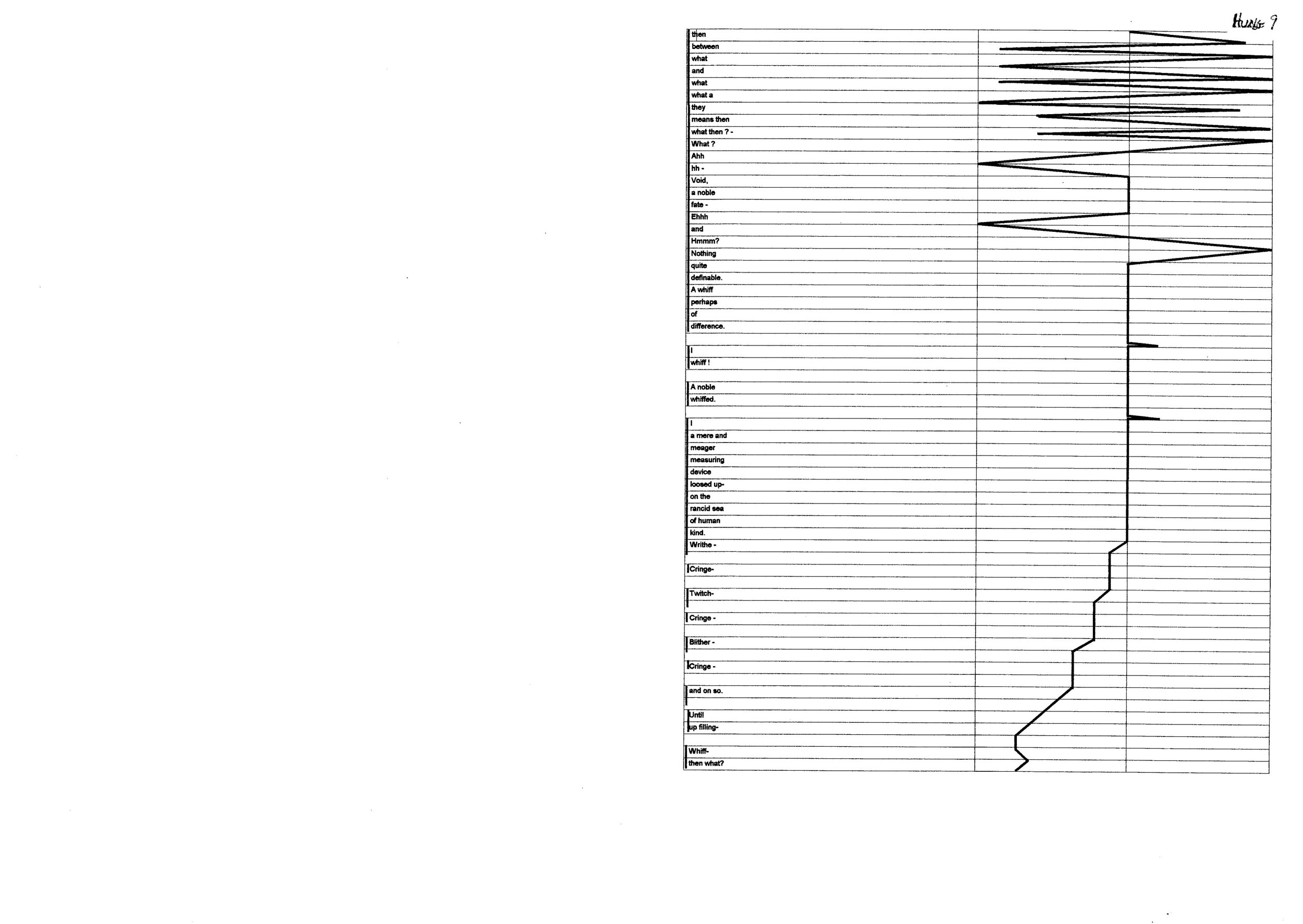
hung
(above) page 9 of 12, by Lisa Fay, performed by Jeff Glassman
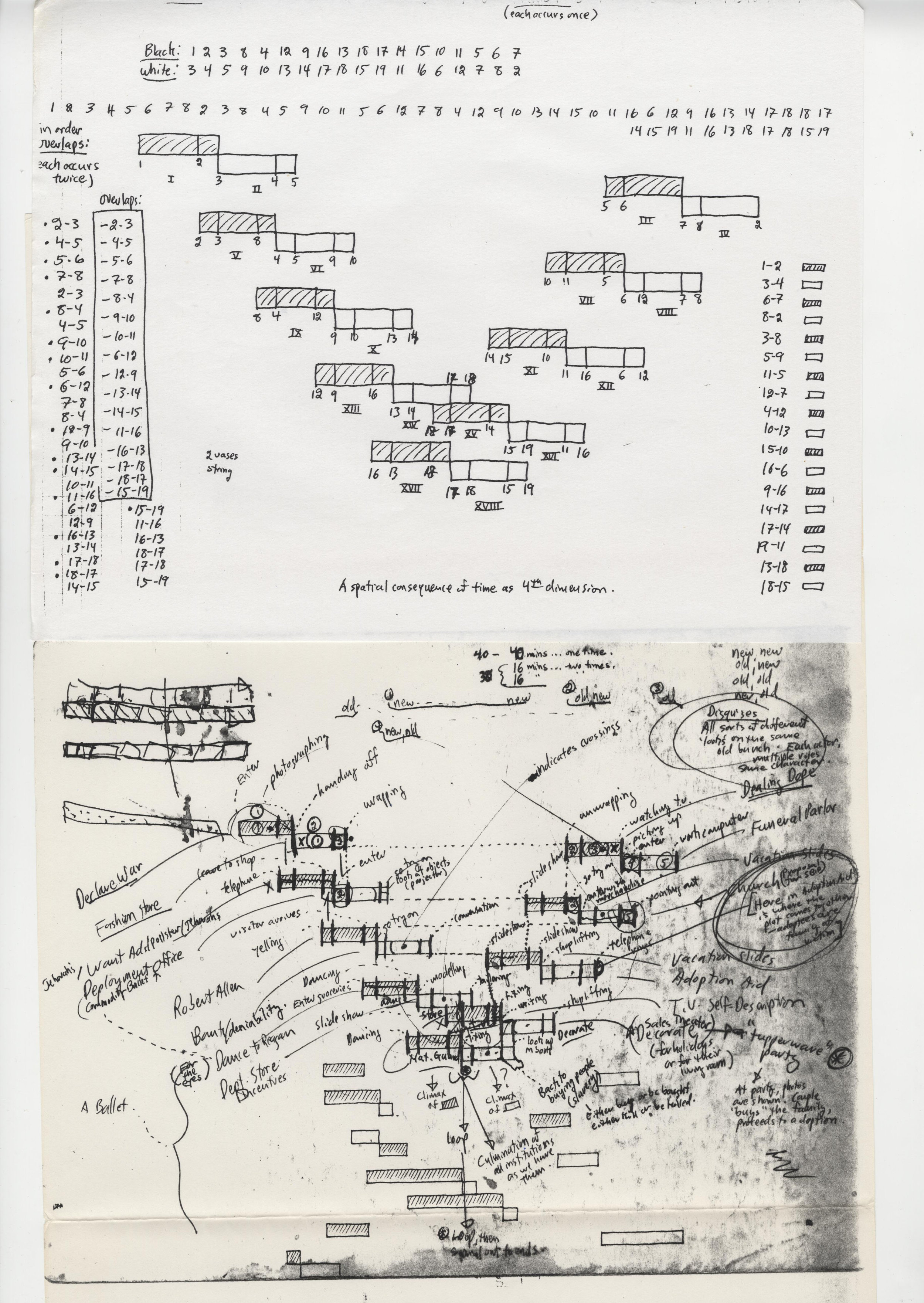
mime trio
(above) time structure and sketches for Mime Trio (performed), also for new play in progress.
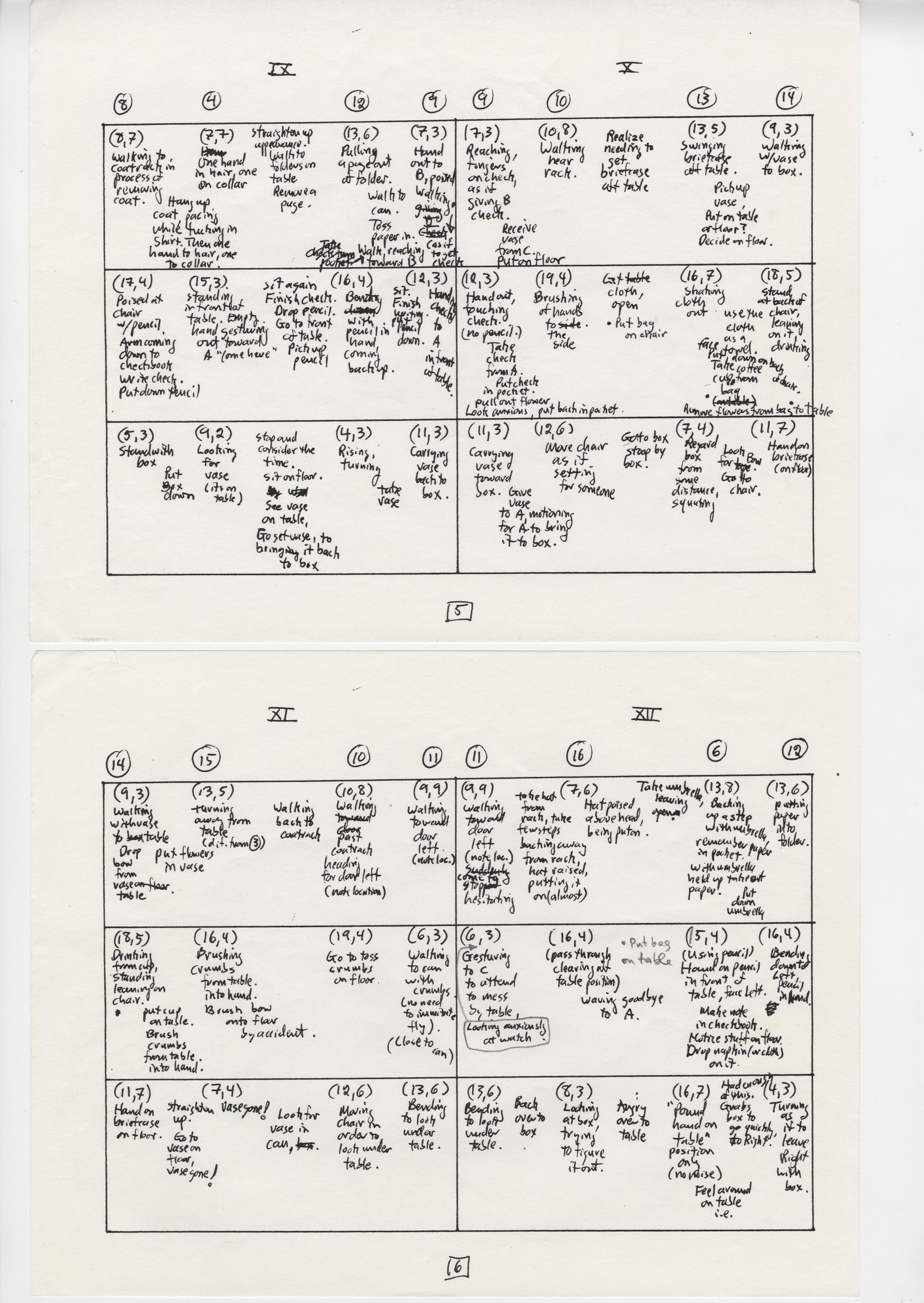
Mime Trio
(above) two pages from long score for Mime Trio for three actors.
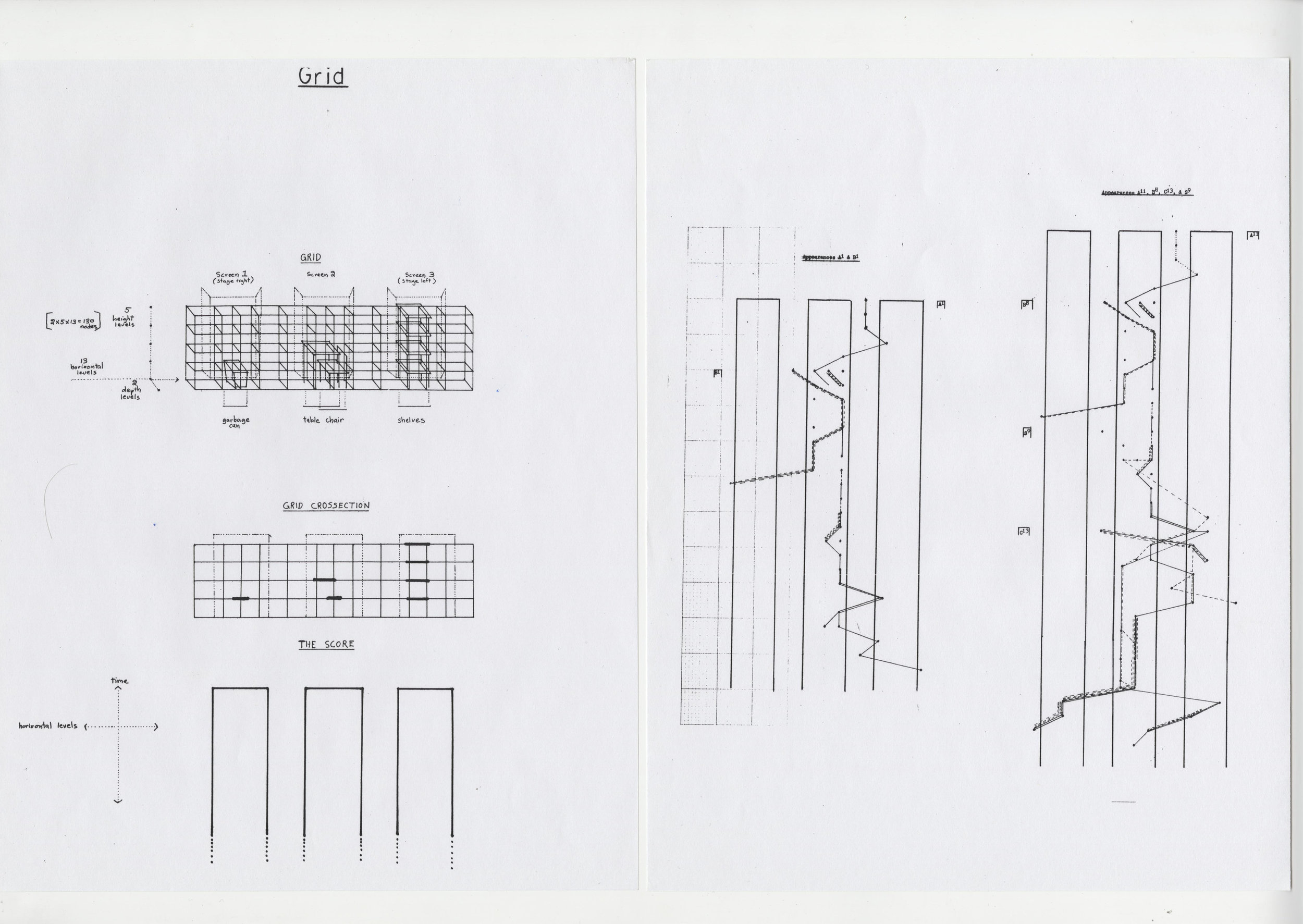
Mime Is No Object
(above) MINO by United Mime Workers, Jeff Glassman et.al., showing basic layout and sample of score (full score is 20ft long in three layers)
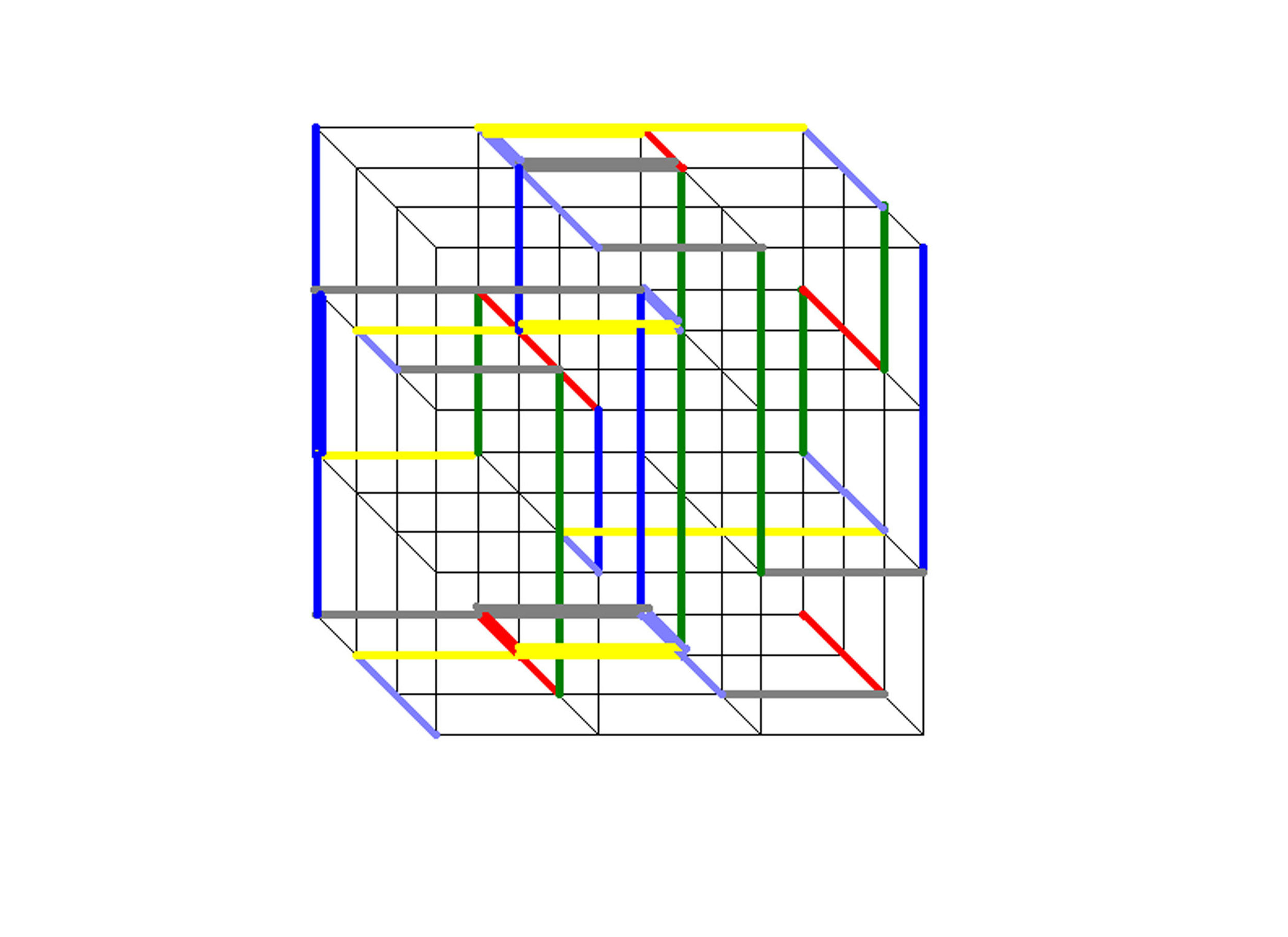
action at a distance
(above) generative cube for sequencing of 6 colored “stories”
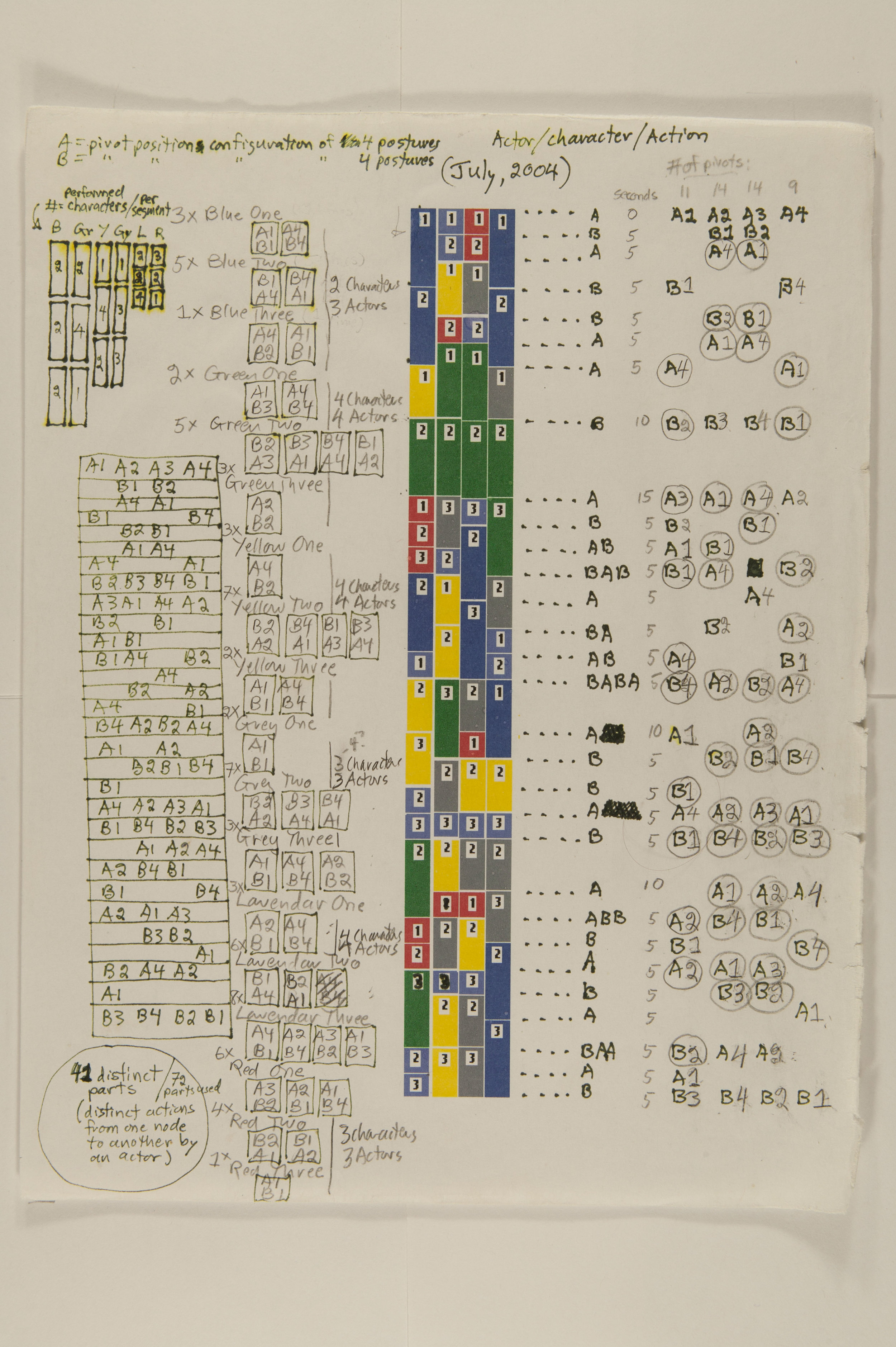
Action at a Distance
(above) early notes showing all information regarding locations of pivot points, what parts of what plays are being used, etc.
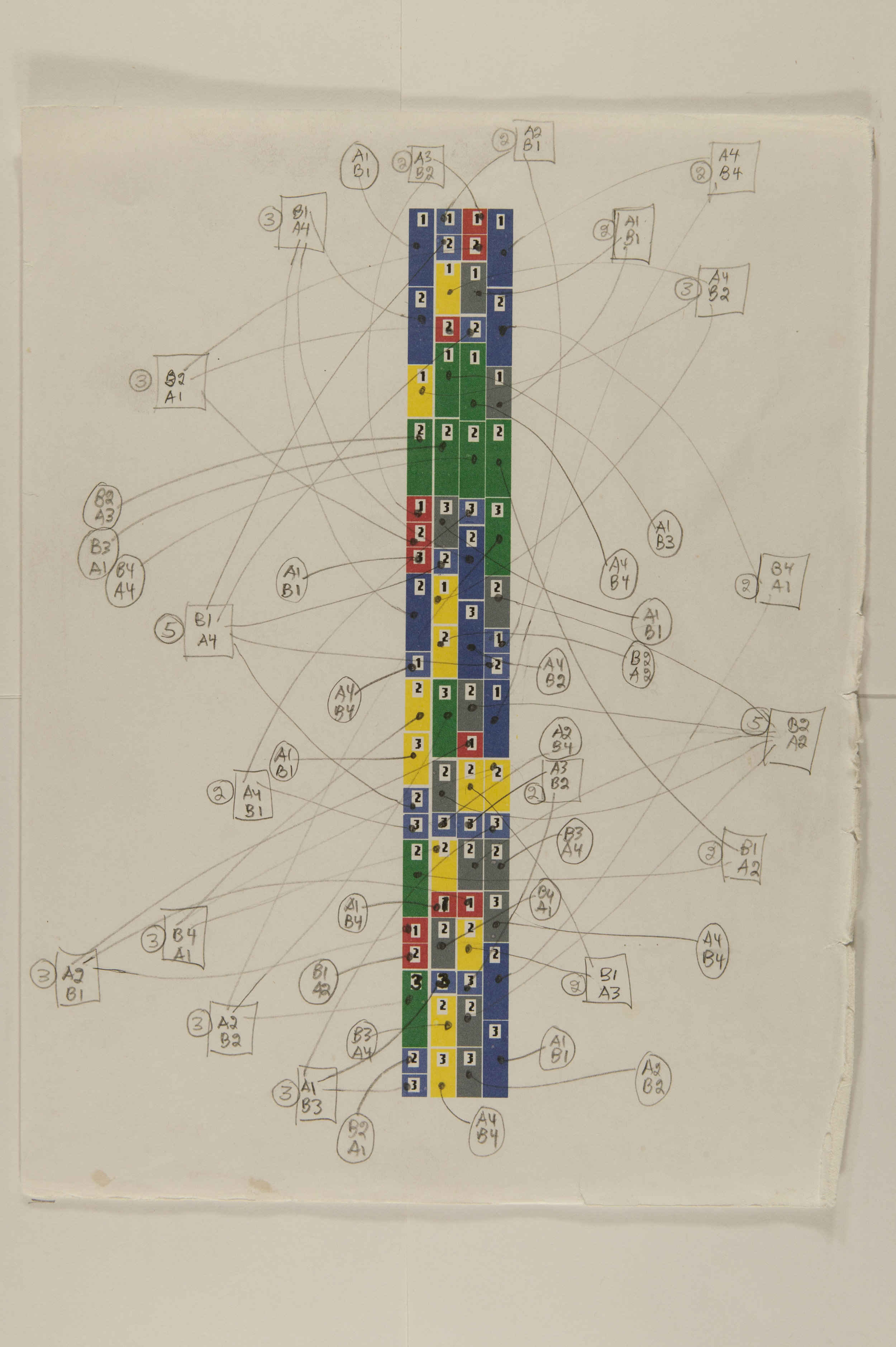
Action at a Distance
(above) early notes showing organization and mosaic of segments of plays (colors) with accounting of repetitions, locations on stage, etc.
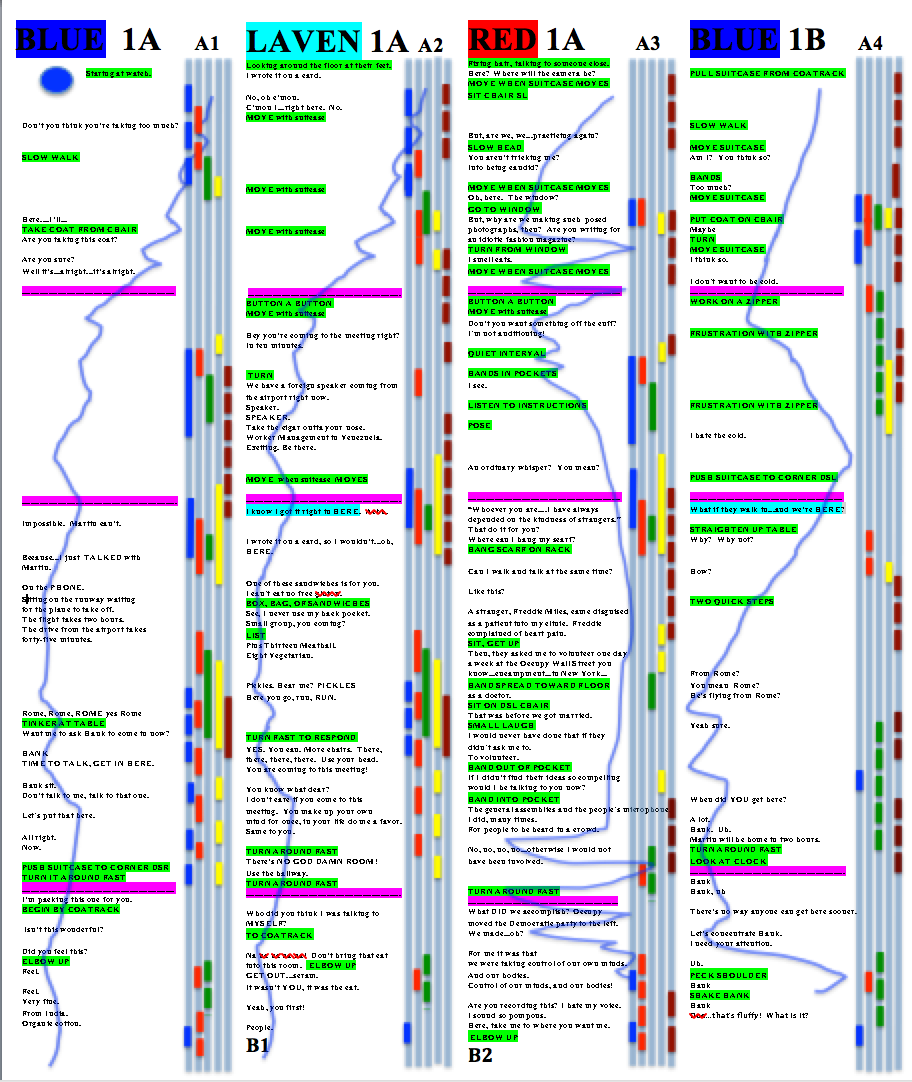
Action at a Distance, Page 1 of 34
(ABOVE) PAGE 1 of 34 working score of a one-hour composition for four actors
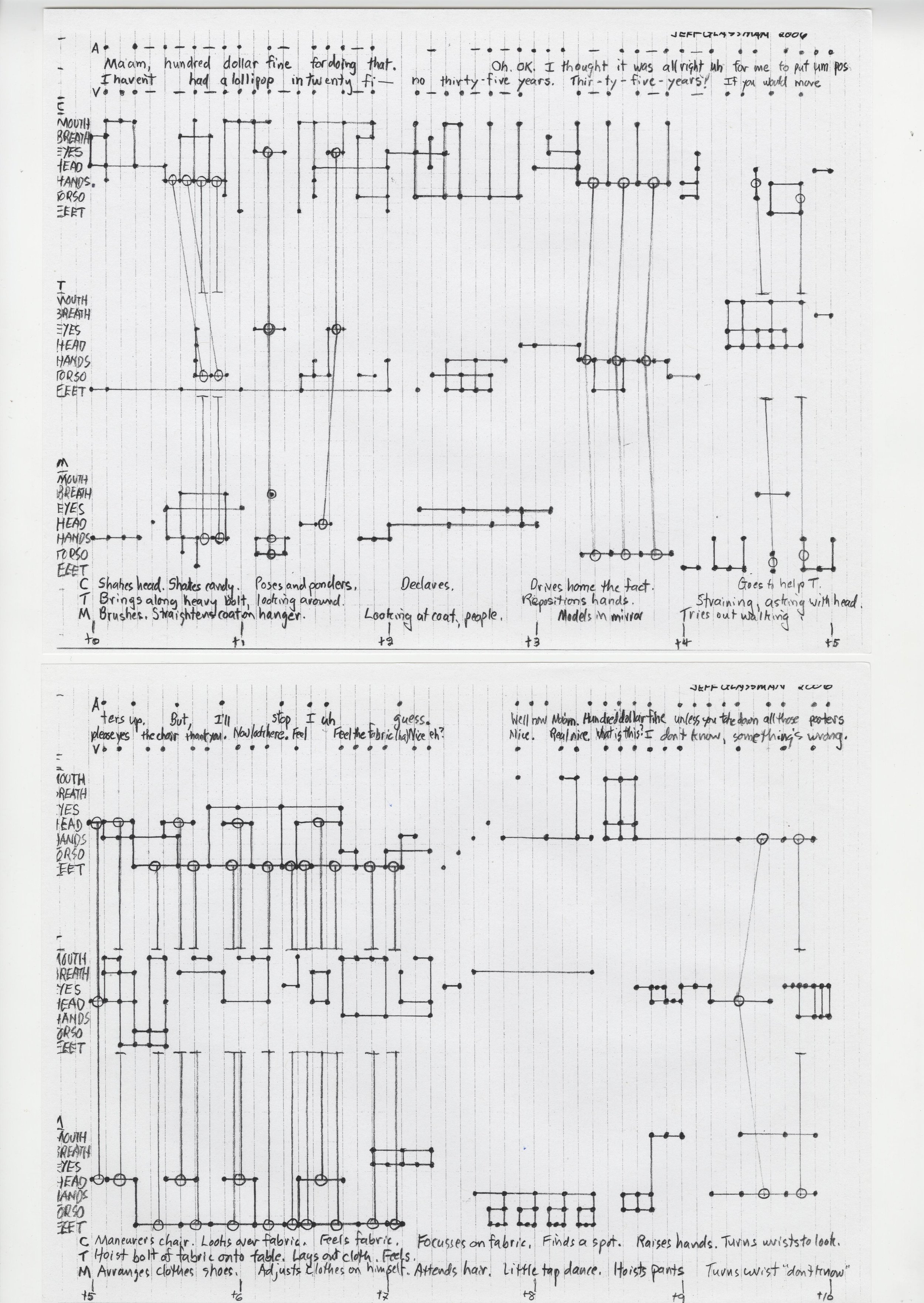
tailor shop
(above) score excerpt, for 3 actors, by Jeff Glassman
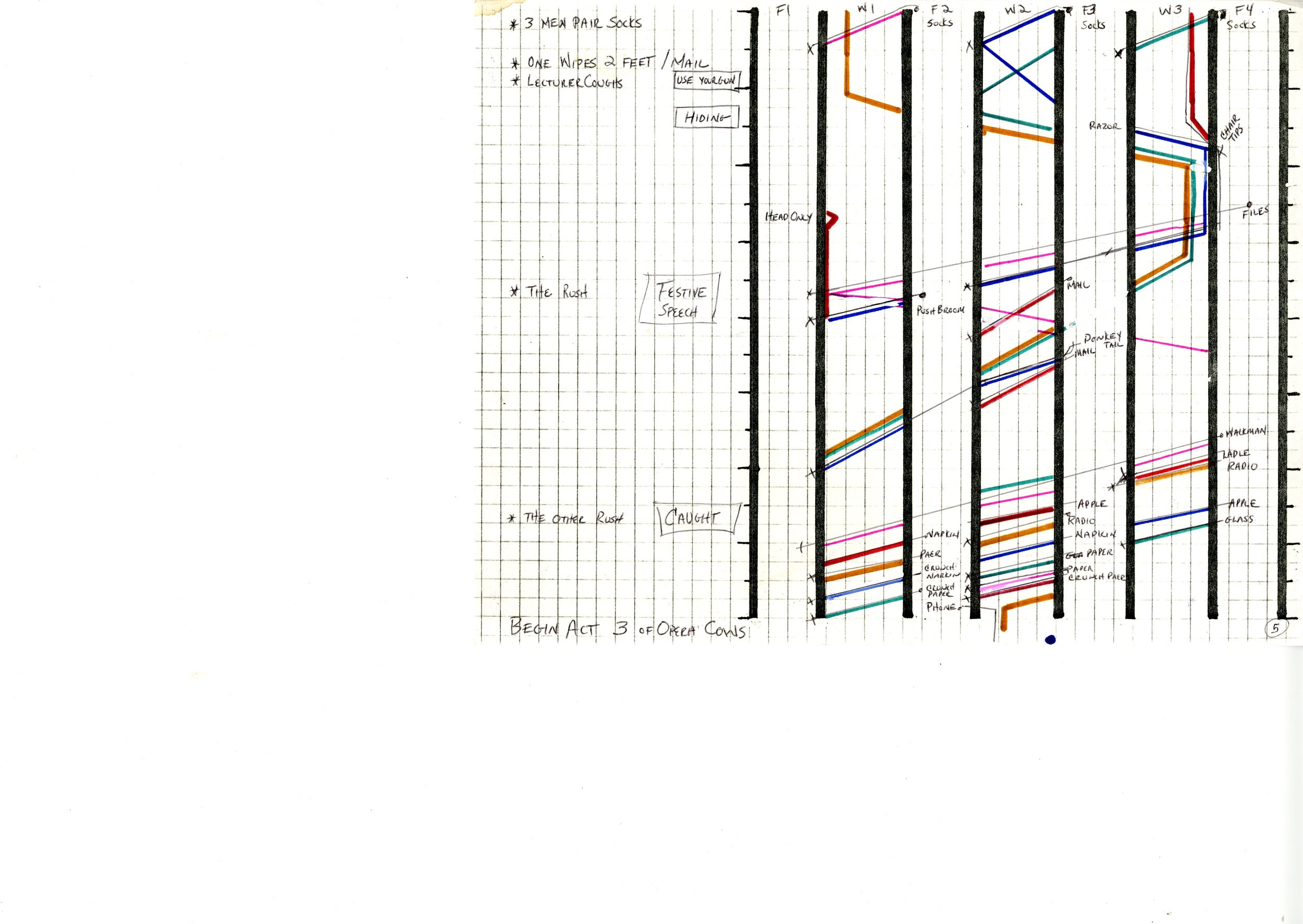
opera
(above) section of Fusspot's Homework ensemble piece, score sketch excerpt, for ensemble of 8, Lisa Fay

Redundant Workers Song of Obsolescence
(above) written and directed by Lisa Fay, performed by Jeff Glassman and Mark Enslin
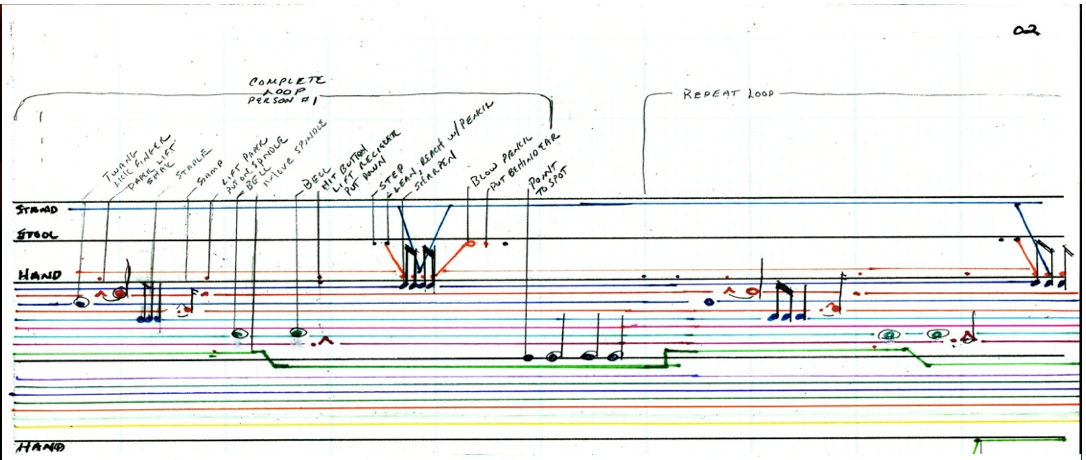
Redundant Workers Song of Obsolescence
(above) score excerpt, written and directed by Lisa Fay, performed by Jeff Glassman and Mark Enslin
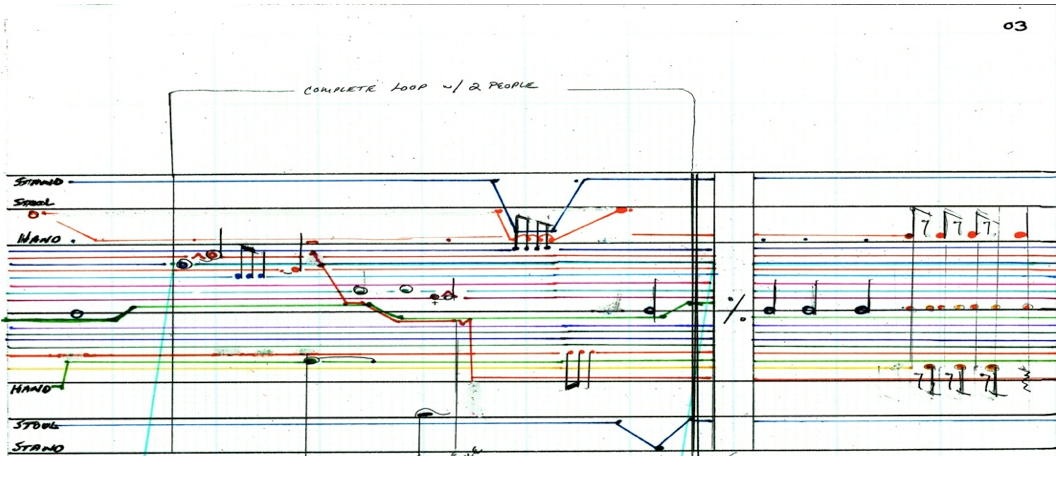
Redundant Workers Song of Obsolescence
(above) score excerpt, written and directed by Lisa Fay, performed by Jeff Glassman and Mark Enslin
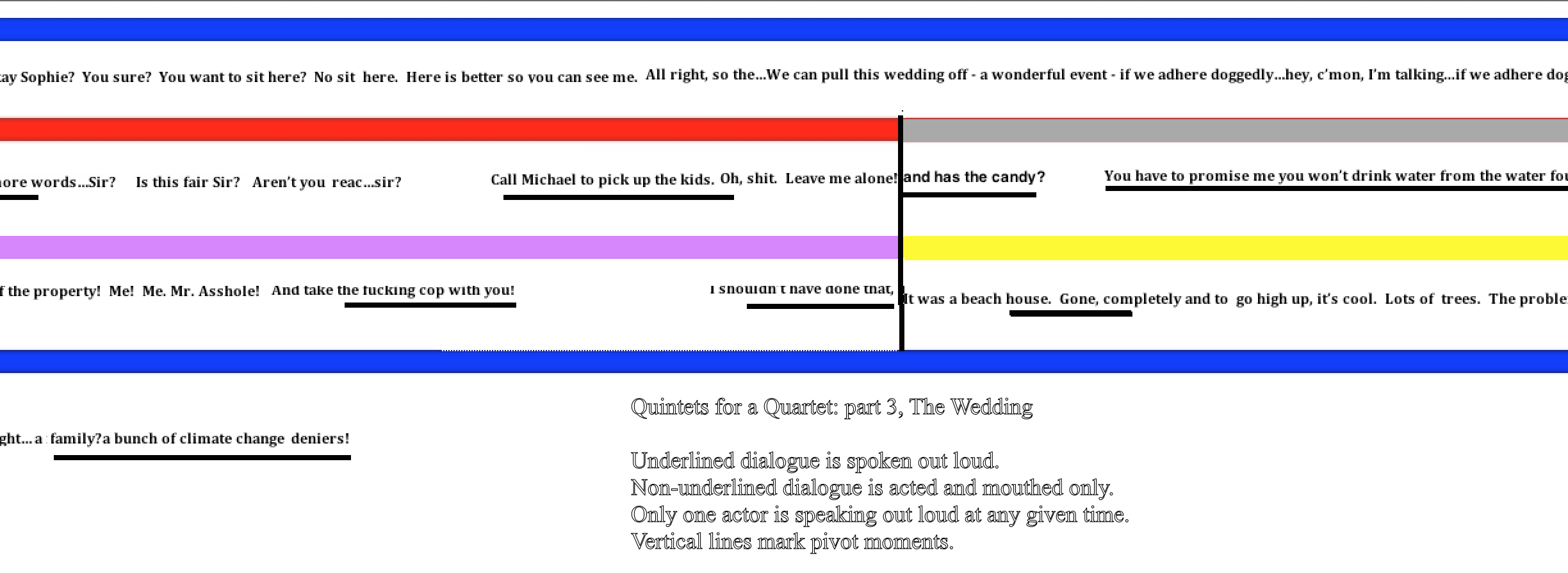
Home fries
(above) score excerpt, for 4 actors, Jeff Glassman
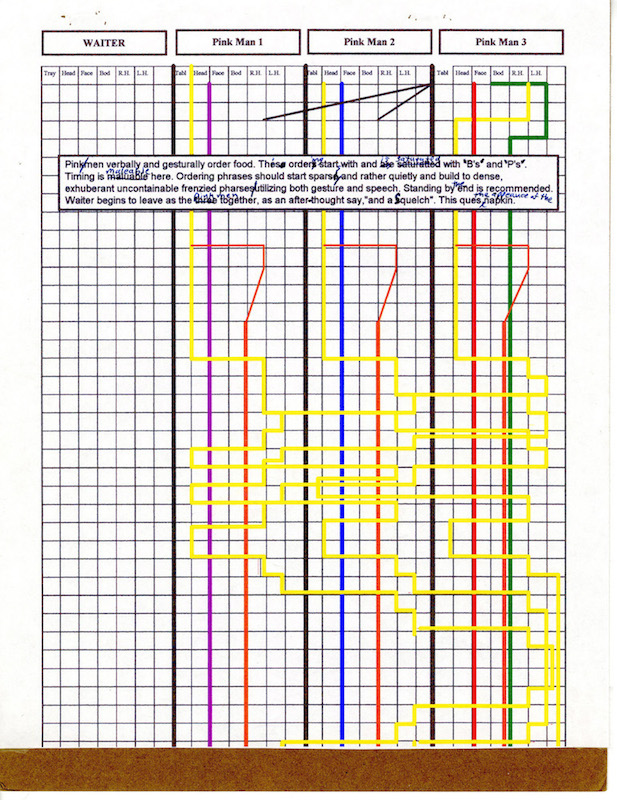
three pink men play tiddly winks at half past five
(above) page excerpt of score for 4 acotrs in ensemble, by Lisa Fay. One section of Fay’s MONOSYLLABIC ARGUMENTATION production
